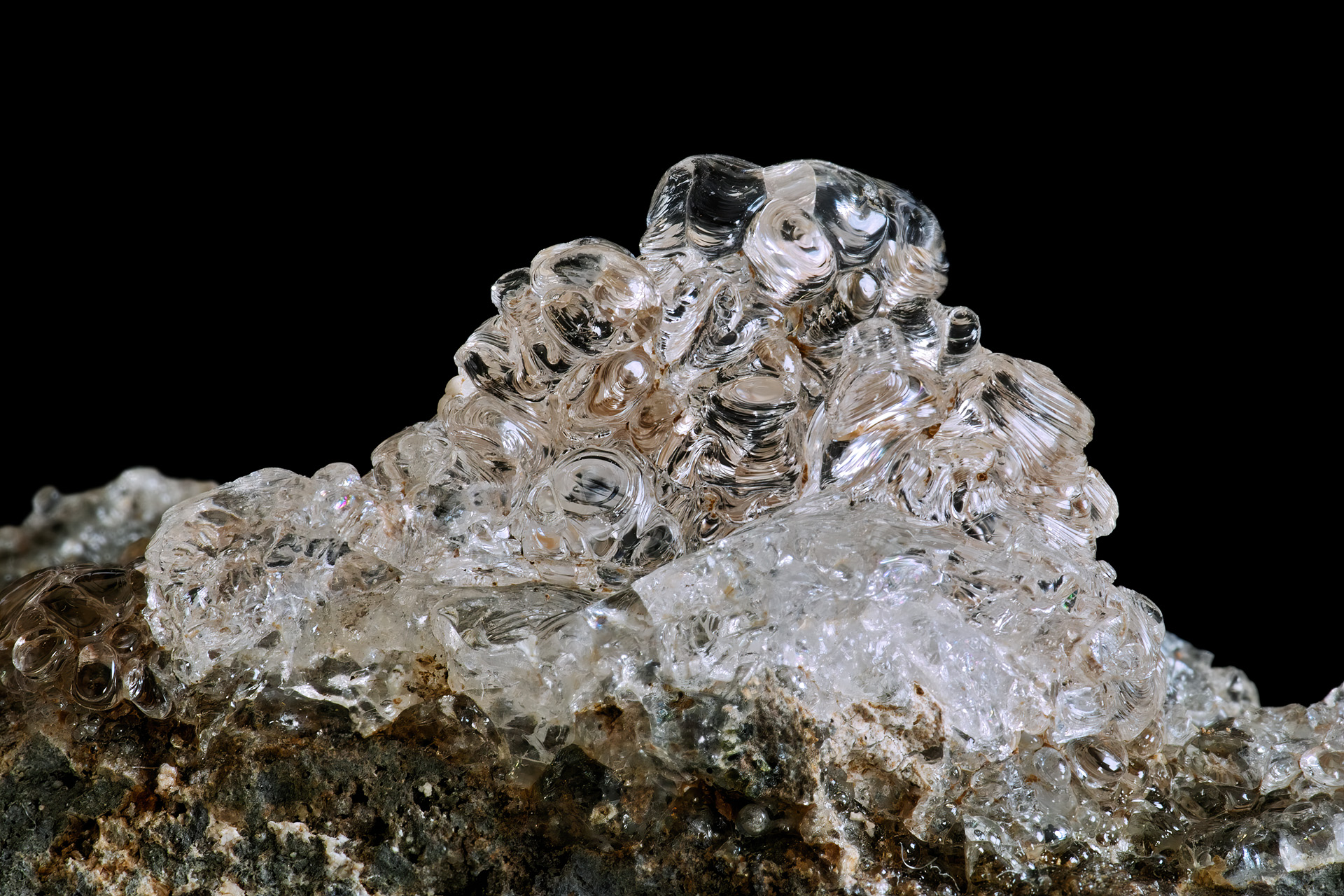Hyalite on:
[Wikipedia]
[Google]
[Amazon]

 Hyalite is a transparent form of
Hyalite is a transparent form of
Mindat dataExplanation from Fluorescent Mineral Society
Opals {{mineral-stub

 Hyalite is a transparent form of
Hyalite is a transparent form of opal
Opal is a hydrated amorphous form of silicon dioxide, silica (SiO2·''n''H2O); its water content may range from 3% to 21% by weight, but is usually between 6% and 10%. Due to the amorphous (chemical) physical structure, it is classified as a ...
with a glassy lustre. It may exhibit an internal play of colors if natural inclusions are present. It is also called Muller's glass, water opal, and jalite. Müller's glass is named after its discoverer, Franz-Joseph Müller von Reichenstein.
Properties
Hyalite has ahardness
In materials science, hardness (antonym: softness) is a measure of the resistance to plastic deformation, such as an indentation (over an area) or a scratch (linear), induced mechanically either by Pressing (metalworking), pressing or abrasion ...
of 5.5–6 on the Mohs scale
The Mohs scale ( ) of mineral hardness is a qualitative ordinal scale, from 1 to 10, characterizing scratch resistance of minerals through the ability of harder material to scratch softer material.
The scale was introduced in 1812 by the Ger ...
and a specific gravity
Relative density, also called specific gravity, is a dimensionless quantity defined as the ratio of the density (mass of a unit volume) of a substance to the density of a given reference material. Specific gravity for solids and liquids is nea ...
of 1.9–2.1. Lacking a plane of cleavage, it has a conchoidal fracture
Fracture is the appearance of a crack or complete separation of an object or material into two or more pieces under the action of stress (mechanics), stress. The fracture of a solid usually occurs due to the development of certain displacemen ...
. The transparent or translucent mineraloid
A mineraloid is a naturally occurring substance that resembles a mineral, but does not demonstrate the crystallinity of a mineral. Mineraloid substances possess chemical compositions that vary beyond the generally accepted ranges for specific mi ...
has a globular structure, a vitreous luster, and a white streak. Hyalite is an amorphous
In condensed matter physics and materials science, an amorphous solid (or non-crystalline solid) is a solid that lacks the long-range order that is a characteristic of a crystal. The terms "glass" and "glassy solid" are sometimes used synonymousl ...
form of silica
Silicon dioxide, also known as silica, is an oxide of silicon with the chemical formula , commonly found in nature as quartz. In many parts of the world, silica is the major constituent of sand. Silica is one of the most complex and abundant f ...
(SiO2) formed as a volcanic sublimate in volcanic
A volcano is commonly defined as a vent or fissure in the crust of a planetary-mass object, such as Earth, that allows hot lava, volcanic ash, and gases to escape from a magma chamber below the surface.
On Earth, volcanoes are most often fo ...
or pegmatic rock and is thereby considered a mineraloid. It contains 3–8% water, either as a silanol group or in molecular form.
Uses
Opalescent hyalite is used in jewellery, and well-formed samples are of interest to collectors due to their unusual appearance, mode of formation and relative rarity. It is sometimes mistaken for resin opal or silica glass since they both may appear clear and globular, but it can be identified under ultraviolet light due to its bright greenfluorescence
Fluorescence is one of two kinds of photoluminescence, the emission of light by a substance that has absorbed light or other electromagnetic radiation. When exposed to ultraviolet radiation, many substances will glow (fluoresce) with colore ...
.
External links
Mindat data
Opals {{mineral-stub